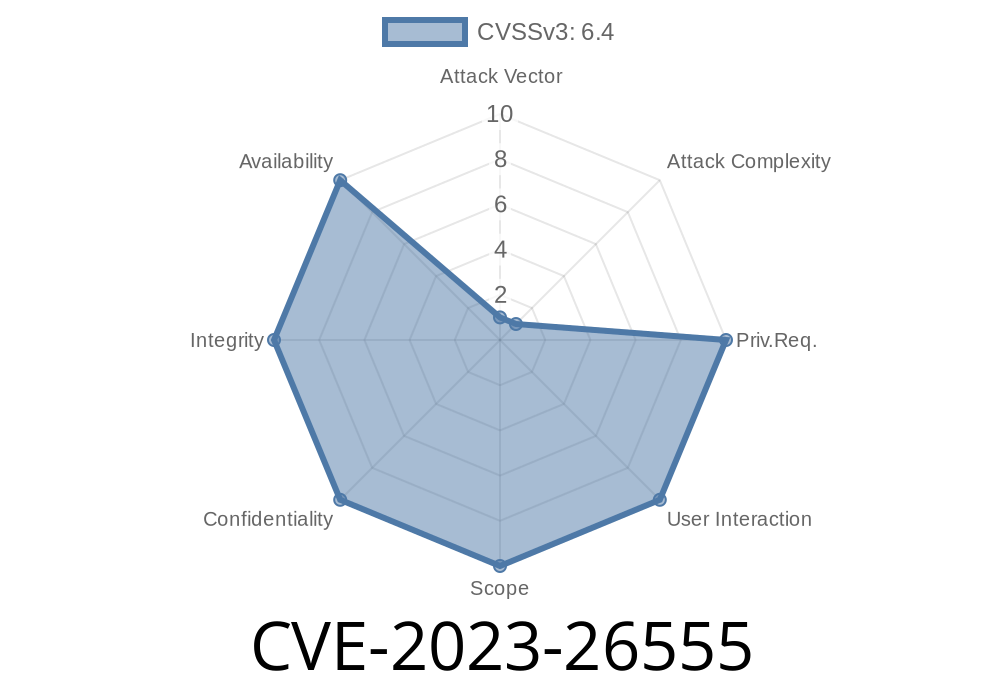If you’re running NTP (Network Time Protocol) version 4.2.8p15, there’s a security flaw you should know about: CVE-2023-26555. This bug hits an edge-case in the clock synchronization feature, specifically when processing data from certain GPS hardware. Although exploiting it is tricky and mostly theoretical, it’s another reminder of how even rare device integrations can cause real-world vulnerabilities.
This article breaks it down in plain language, shows you the affected code, and explains how an attacker *could* try to exploit the issue—if they could get close enough.
What Is CVE-2023-26555 About?
NTP is what your servers and desktops use to keep their clocks in sync with the rest of the world. In version 4.2.8p15, there’s a problem in the file ntpd/refclock_palisade.c inside the function praecis_parse. This code is designed to read data from a GPS receiver, specifically a device from a vendor called Palisade.
The bug? An out-of-bounds write. This means the code takes data from the GPS, then writes it into memory without always checking that the memory block is big enough. In a worst-case scenario, this could crash your NTP service or, in rare cases, possibly be used to run malicious code.
The GPS feed you’re using is *maliciously altered*.
Most NTP setups, especially in cloud and datacenter servers, don’t use this specific GPS receiver. If your NTP config doesn’t mention the Palisade clock, you can stop worrying.
Here’s the simplified (and actual) code in question, from refclock_palisade.c
static void praecis_parse(
struct peer *peer,
struct refclockproc *pp
) {
char *cp, *data;
...
// Find data after a certain pattern
cp = strchr(packet, '@');
if (cp != NULL) {
data = cp + 1;
// Copy the data into buffer without length checks
strcpy(pp->a_lastcode, data);
...
}
...
}
The problem:
strcpy copies data from data into pp->a_lastcode without checking if data is longer than the destination buffer. If the GPS message is too long, this will write past the end of the buffer.
How Could This Be Attacked?
*This is not something a remote attacker on your network can do over TCP/IP or UDP.*
Those messages are then fed into your NTP server, which is using the Palisade clock configuration.
If all the stars align, the overlong message could corrupt memory. Most likely, this would just crash ntpd—you’d lose time sync. In rare (and very advanced) cases, with the right message, it might be possible to inject code and take over the NTP process.
*Here’s a detailed analysis from Talos.*
Real-World Exploit Example
Imagine a vulnerable NTP daemon with Palisade clock enabled and someone plugs in a compromised GPS receiver. That device keeps sending this kind of message:
@LONG_MALICIOUS_GPS_DATA_THAT_OVERFLOWS_THE_BUFFER...
If you were to protocol this in C for a PoC (Proof of Concept), you’d simulate feeding an overlong string to the parser:
char example_packet[] = "@AAAAAAAAAAAAAAAAAAAAAAAAAAAAAAAAAAAAAAAAAAAAAAAAAAAAAA..."; // hundreds of 'A's
char buffer[32];
strcpy(buffer, example_packet + 1); // Writes out-of-bounds, just like the bug
You can see that if example_packet is much bigger than 32 bytes, it writes past buffer's end—corrupting stack memory.
Mitigation
* Patch your NTP daemon:
The latest version fixes this by switching to strncpy or similar calls with explicit bounds checking:
`c
strncpy(pp->a_lastcode, data, NTP_MAXSTRLEN); // Safer!
pp->a_lastcode[NTP_MAXSTRLEN - 1] = '\'; // Ensure NULL-termination
`
* Check your configuration:
If you don’t use the Palisade GPS clock, you aren’t vulnerable.
* Physical security matters:
Remember, an attacker needs close access to your GPS hardware to make this happen.
---
## References
- Official CVE-2023-26555 NVD page
- NTP Bug Tracker
- Upstream Security Advisory
---
## Conclusion
CVE-2023-26555 is a reminder that even systems glued together with niche hardware—like specialized GPS clocks—need solid input checks. Luckily, this vulnerability is hard to exploit and unlikely to impact most users. But it’s always smart to patch up and clamp down on physical access to critical infrastructure.
If you learned something or this helped you, consider securing all your hardware interfaces—because attackers don’t always come through the network!
Timeline
Published on: 04/11/2023 21:15:00 UTC
Last modified on: 04/24/2023 13:58:00 UTC
